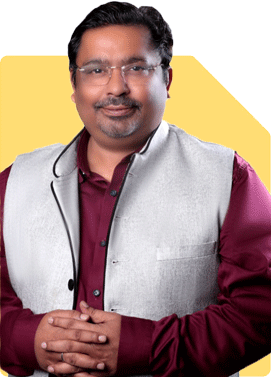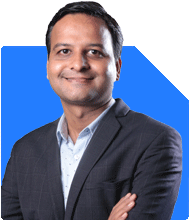How To Choose the Best Mutual Funds for My Portfolio?
Ramalingam Kalirajan |10881 Answers |Ask -Follow
Mutual Funds, Financial Planning Expert - Answered on Mar 11, 2025
He has an MBA in finance from the University of Madras and is a certified financial planner.
He is the director and chief financial planner at Holistic Investment, a Chennai-based firm that offers financial planning and wealth management advice.... more

Hello Sir, I have invested in the following Mutual Funds: Tata Hybrid Equity Fund, Tata Banking & Financial Funds, Axis Blue Chip, Axis ELSS Tax Saver Fund, Axis Global Equity Alpha, Axis Small Cap, Mirae Asset ELSS Tax Saver, Quant Active Fund, Quant ELSS Tax Saver Fund, Birla Focused Equity Fund, Kotak Flexicap Fund, HSBC Value Fund, SBI Direct Bond Fund, SBI Magnum Income Plan, SBI Banking&Financial Services, SBI Blue Chip, SBI Flexicap Fund, DSP ELSS Tax Saver Fund. Pls. advise if I hold on to them or lose some of them?
Key Observations
Overlapping Funds: Multiple funds from the same AMC in similar categories reduce diversification.
Sector-Specific Funds: Banking and financial sector funds add concentration risk.
Too Many ELSS Funds: Excessive ELSS funds may reduce focus on wealth creation.
Global Fund Exposure: International funds can diversify risks but may underperform in volatile global conditions.
Bond Funds for Stability: While bond funds offer stability, they may limit long-term growth.
Recommended Actions
Equity Funds: Focus on Quality Over Quantity
Retain 1-2 large-cap funds for stability and consistent returns.
Keep 1 flexi-cap fund for dynamic investment across market caps.
Retain 1-2 ELSS funds if you require tax savings; avoid over-diversification in this category.
Hold 1 small-cap fund for aggressive growth, but limit exposure to manage volatility.
Avoid multiple funds with similar strategies as they create redundancy.
Sector Funds: Reduce Concentration Risk
Reduce exposure to banking and financial services funds. These are cyclical and can underperform during economic downturns.
Instead, focus on diversified equity funds that include financial sector stocks.
Global Equity Funds: Moderate Allocation
Retain your global fund if you seek international diversification.
Limit exposure to less than 10% of your total portfolio to reduce currency risk.
Bond Funds: Stability with Limited Growth
Retain 1 bond fund for liquidity needs or near-term expenses.
Avoid excessive debt fund investments if your goal is long-term wealth creation.
Portfolio Optimisation Strategy
Aim for 7-9 well-chosen funds instead of spreading investments too thin.
Focus on a mix of large-cap, flexi-cap, mid-cap, and small-cap funds for balanced growth.
Retain one global fund for international exposure.
Include one debt fund for short-term financial needs.
Exit funds with similar investment strategies to improve clarity and focus.
Tax Efficiency Considerations
Consider the latest capital gains tax rules when redeeming equity funds.
Long-term capital gains (LTCG) above Rs 1.25 lakh are taxed at 12.5%.
Short-term capital gains (STCG) are taxed at 20%.
For debt funds, both LTCG and STCG are taxed as per your income slab.
Plan redemptions strategically to minimise tax impact.
SIP Strategy
Continue SIPs in high-performing equity funds with strong track records.
Increase SIPs in funds aligned with your long-term goals.
Reduce or stop SIPs in overlapping or underperforming funds.
Final Insights
Your portfolio requires better alignment with your financial goals. By reducing fund overlap and sector-specific exposure, you can improve returns and risk management. Focus on a leaner, more diversified portfolio with a strong mix of equity and debt funds.
Best Regards,
K. Ramalingam, MBA, CFP,
Chief Financial Planner,
www.holisticinvestment.in
https://www.youtube.com/@HolisticInvestment
You may like to see similar questions and answers below
Omkeshwar Singh | Answer |Ask -Follow
Head, Rank MF - Answered on Nov 29, 2019
Ramalingam Kalirajan |10881 Answers |Ask -Follow
Mutual Funds, Financial Planning Expert - Answered on Apr 09, 2024
Ulhas Joshi |280 Answers |Ask -Follow
Mutual Fund Expert - Answered on Jun 20, 2023
Ramalingam Kalirajan |10881 Answers |Ask -Follow
Mutual Funds, Financial Planning Expert - Answered on Apr 30, 2024
Nayagam P P |10854 Answers |Ask -Follow
Career Counsellor - Answered on Dec 14, 2025
Radheshyam Zanwar |6744 Answers |Ask -Follow
MHT-CET, IIT-JEE, NEET-UG Expert - Answered on Dec 14, 2025
Radheshyam Zanwar |6744 Answers |Ask -Follow
MHT-CET, IIT-JEE, NEET-UG Expert - Answered on Dec 14, 2025
Dr Dipankar Dutta |1840 Answers |Ask -Follow
Tech Careers and Skill Development Expert - Answered on Dec 14, 2025
Dr Dipankar Dutta |1840 Answers |Ask -Follow
Tech Careers and Skill Development Expert - Answered on Dec 13, 2025
Dr Dipankar Dutta |1840 Answers |Ask -Follow
Tech Careers and Skill Development Expert - Answered on Dec 13, 2025
Mayank Chandel |2575 Answers |Ask -Follow
IIT-JEE, NEET-UG, SAT, CLAT, CA, CS Exam Expert - Answered on Dec 13, 2025
Radheshyam Zanwar |6744 Answers |Ask -Follow
MHT-CET, IIT-JEE, NEET-UG Expert - Answered on Dec 13, 2025
Mayank Chandel |2575 Answers |Ask -Follow
IIT-JEE, NEET-UG, SAT, CLAT, CA, CS Exam Expert - Answered on Dec 13, 2025
Mayank Chandel |2575 Answers |Ask -Follow
IIT-JEE, NEET-UG, SAT, CLAT, CA, CS Exam Expert - Answered on Dec 13, 2025

























